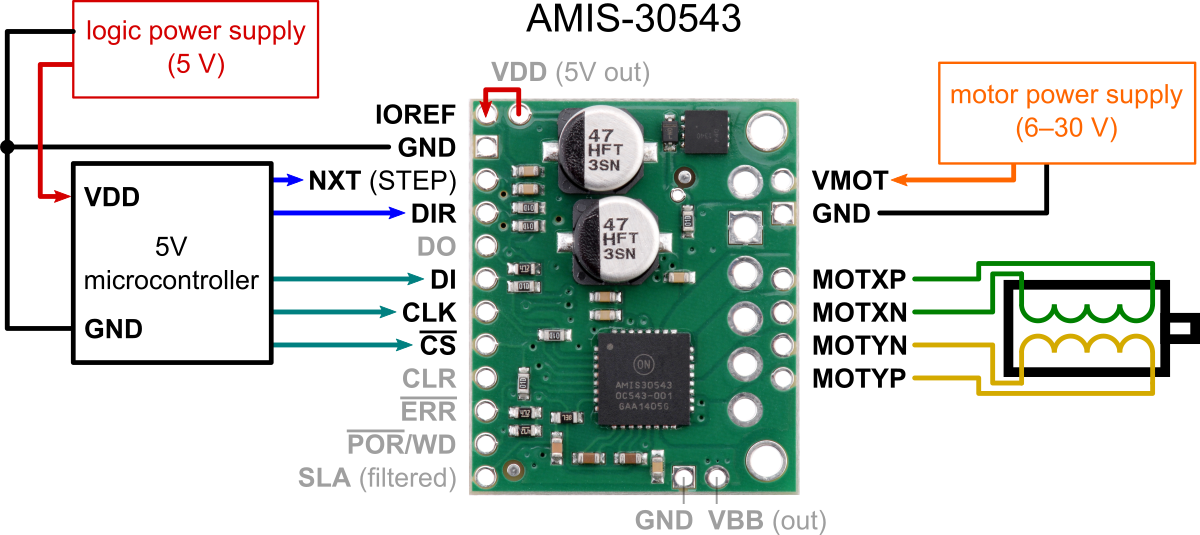5 Phase Stepper Motor Driver Projects

I uploaded this video and wondered if it would have any interest so I'm posting it here. Comments welcome!:) https://youtu.be/MMj8qlf6S0I.
The compact 5 Phase stepper driver project can handle motor up to 3.5amps supply 12-30V DC, driver has facility to set the load current, driver provides half stepping and full stepping, and easy to drive with step and direction pulse, trimmer pot provided to set the current, The SI-7510 is a pre-driver IC for driving 5-phase stepper motors wound in the New Pentagon configuration (driver circuit design patented by Oriental Motor Co., Ltd.). Direct external control of motor driving functions are synchronized by the built-in sequencer to an applied clock input (CL) signal. The SI-7510 drive is implemented with a user-configurable output stage consisting of dual N-channel power MOSFETs. This results in lower thermal resistance and greater efficiency.
Il 2 sturmovik battle of stalingrad torrent. We can show you the progress we have made on the three coming planes: P-38J-25 heavy fighter, B-25 heavy bomber (AI only), and Me 262 A jet fighter. For the first one of them, P-38J-25, we have used a new approach of creating the exterior and interior 3D models in parallel.... But these map development news are not the only ones we have. First, we can disclose more details about the map of the project.....
Interesting you should ask this. Immo killer v1 10 download free. I've been working a lot with stepper motors and especially the oriental pk series. The sad truth is 5-phase stepper motors aren't really used anymore, due to being a pain to work with.
This being said you'll have to figure out the grey code required for the stepper motor to step. You'll be better off with other stepper motors. Also remember the arduino cannot power the stepper motors directly! You will end up drawing too many amps and essentially shorting out. The stepper motor should have the nominal amps and winding resistance written on the back of it. If you really are committed to this, you will need to build a circuit using the measured winding resistance between each two terminals - that provides the proper amperage to the motor for a given voltage. You'll need to get your hands on a lot of high amp diodes and high wattage, low resistance resistors.
This way you can use a common 12 volt power supply to power a motor that itself would need 1.5 volts with 1.5 amps. There may also be some age old drivers out there, but you'll still need all the diodes unless you want to risk dealing with inductive spikes. Many thanks for your reply. Haha Believe you me, I have found out that they are a pain, alright.

Even before any wiring. I am worrying about finding the right voltage and currents, and I can't find datasheets for this model at all. I'm using drivers for it, alright. I have some uln2003A chips, and I also have some of the giant block drivers that are made for it, but they are ~120V AC, and that is a problem for me, as the power supplies we have are 24V. It's part of a college project, and my insistence on using them is due to wanting to solve the problem rather than avoid it, but I'm getting very stressed, and it isn't worth it. I may have to machine new parts to accommodate new motors, but I reckon this is an acceptable trade-off • • • • •. I don't think that library is going to cut it, if you were going to use those motors i think you'd have to code the pulse sequence manually.